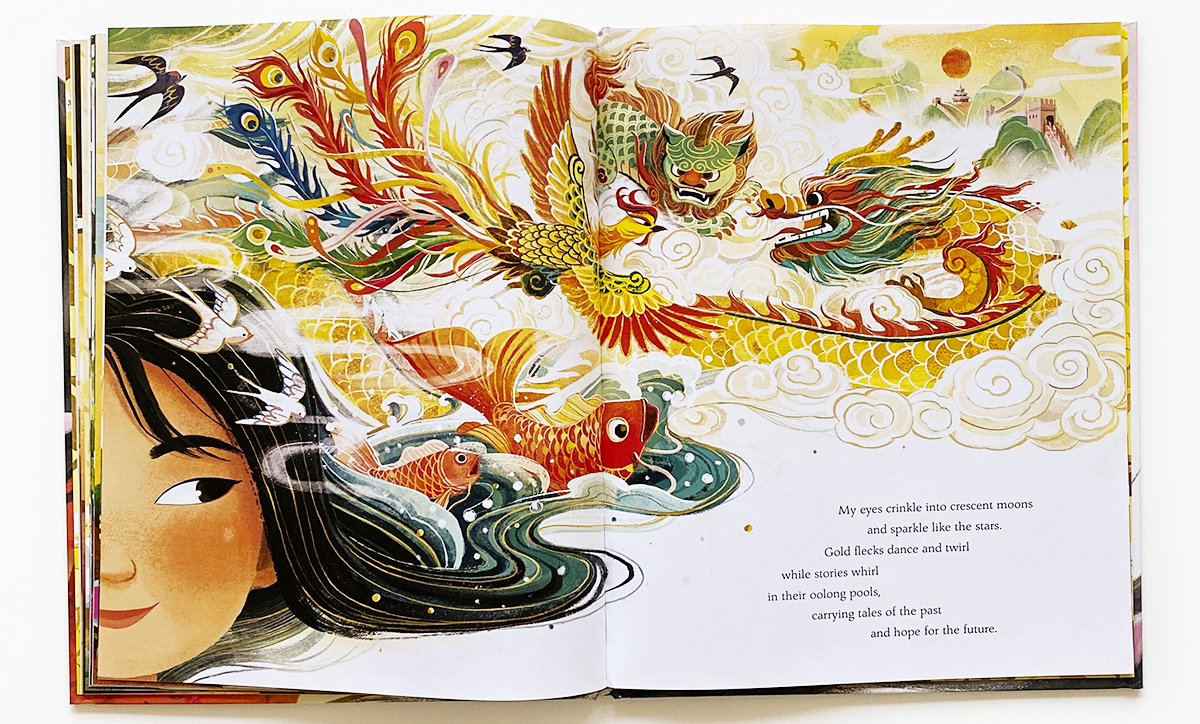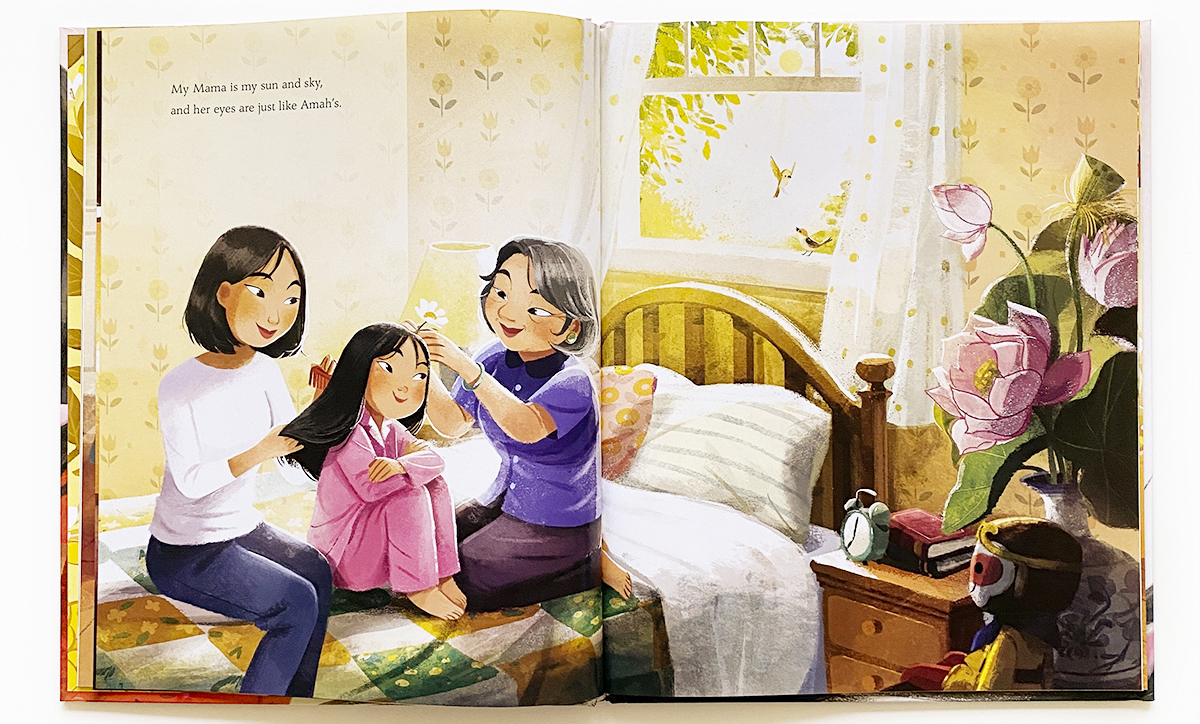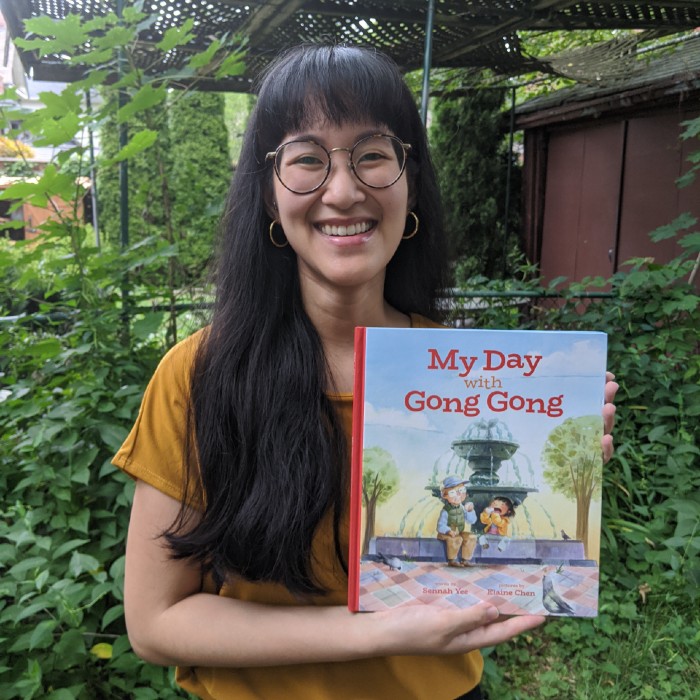Who do you picture when you think of a Disney princess? For most, the answer is probably a girl with skin as white as snow and round, blue eyes with long lashes.
These are the types of women Joanna Ho saw in the media when she was young. Growing up as a Taiwanese girl in Minnesota didn’t help either — the community was very white at the time. She remembers frequently looking in the mirror and pulling up her eyelids to make them bigger.
“It was like an inside joke in my family,” Ho tells The RepresentASIAN Project.
‘Joanna really has a thing about her eyes! She wishes she had bigger eyes and had longer eyelashes,’ they’d say.
It wasn’t until she visited Taiwan at the age of 30 when she had an epiphany. Flipping through the pages of a magazine in a 7/11, she saw herself. All of the women were Asian, with similar eye shapes as hers, and they were beautiful.


This memory is her inspiration for her debut children’s book, Eyes that Kiss in the Corners. Illustrated by Dung Ho, the story follows a young Asian girl who notices that her eyes are different from her peers’ big eyes. Despite that, she sees her own beauty, which reflects her Mama, Amah (grandmother), and sister’s “eyes that kiss in the corners and glow like warm tea.”
The book rejects white beauty standards and the historically racist portrayal of “Asian eyes”.
“There’s a very long generational use of language to describe our eyes to oppress and discriminate against Asian people,” says Ho. “So, how do I describe this beautiful shape without using the words ‘slant’, ‘angled’, or ‘narrow’? Things that have super negative connotations.”
She was in her happy place, snuggling in bed with her son and daughter, when she came up with the answer — describing her eyes touching gently in the corners like a kiss.
“I think that when we have been upheld to, frankly, white supremacist standards of beauty…truly believing that you’re beautiful really is an act of revolution,” says Ho.
All of the characters in the book are inspired by her family. She sees parts of her mom in Mama, whose eyes “crinkle like crescent moons.” A part of the book delves into Amah’s eyes that are “filled with so many stories.” The character is based on Ho’s grandma, who was born in Taiwan under Japanese occupation and was blind for most of her life. Last, but certainly not least, she sees her daughter in the young girl.

“When [my daughter] saw the sketches for the first time, she said, ‘That’s you mommy,’ and then ‘That’s me!’ I just started crying,” says Ho.
Ho began writing because of her son. In December 2014, she was searching for inclusive children’s books as a Christmas present for him and came up with nothing. So, she decided to take things into her own hands. In the winter of 2016, when her son was two-years-old and she was pregnant with her daughter, Ho began writing what would become a New York Times bestseller.
“It’s a little bit surreal to think that something that has been living on my computer for so long is now in the hands of children, families, and adults around the world, making an impact,” she says.
The book was released on January 5 and has had a positive reception. Many comments have been from adults saying they wished it existed when they were younger. While Ho is glad she’s been able to create a book people can see themselves in, she says this is also indicative of how BIPOC representation is still lacking in the media.
She hopes that one day inclusion will be the norm, so that books like hers don’t need to be labelled as “diverse” or “multicultural”.
“It needs to be the norm, so that we don’t need all of these other signifiers to say this is a special book because it’s not about a white person,” explains Ho.
She has always been a champion of anti-racism and equity. Currently the vice principal of a high school in California, Ho strives to make the U.S. education system more equitable for students of colour. She has also worked for an organization that designed an alternative-to-prison program.
The Bay Area-based author is set to release another book this fall called Playing at the Border: A Story of Yo-Yo Ma.
Eyes that Kiss in the Corners is available now in stores and online.










